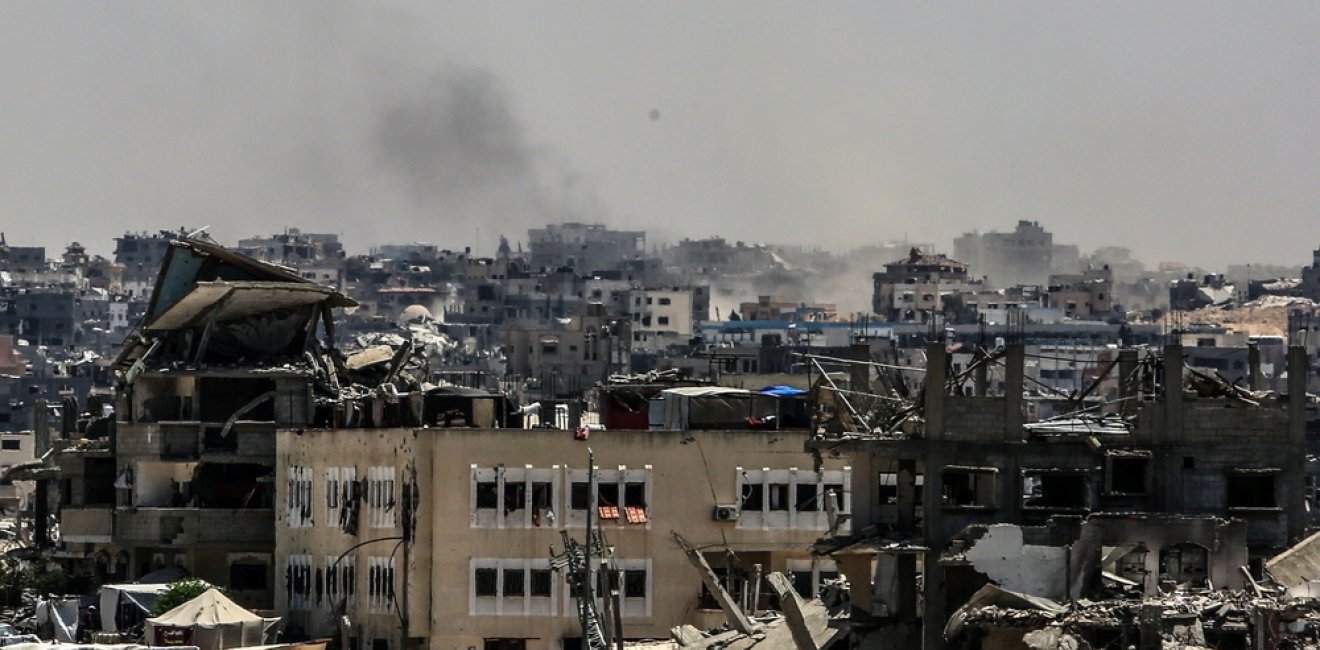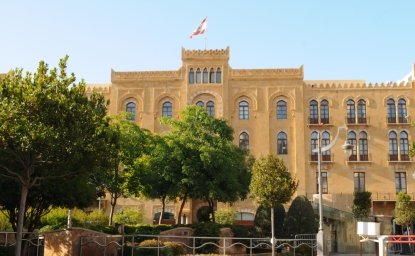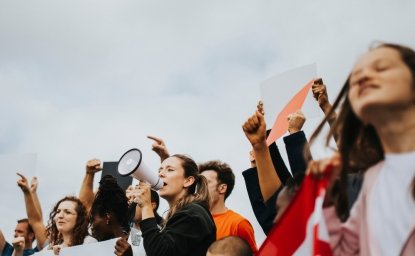Words fail to describe the totality of the deprivation, degradation, and dispossession experienced by everyone in Gaza.
Every day, for nearly a year, the women in Gaza—those that have survived—have been living through one of the most horrific experiences imaginable. While the life they knew prior to October 7, 2023, was certainly still one of deprivation, due to more than 15 years of Israeli blockade and multiple bombing campaigns, it was a life that could be lived.
You could build and tend a house, go to college, and send your child to school. You could see a doctor for prenatal care, cook a nutritious meal, watch your children play soccer, or reach for an ibuprofen to soothe a headache. Today, all those mundane activities are impossible. Women in Gaza today are not even guaranteed the ability to wash their hands, have a c-section with pain medication, or eat a full meal every day. Many have been displaced multiple times, their homes destroyed, as they navigate this new world with the trauma of seeing their loved ones and neighbors killed or maimed.
Staggering numbers killed
We know, through research and personal testimonies, that men are more likely (in most wars) to suffer from battle-related traumas, while women are more likely to suffer from the long-term, indirect consequences of war, like food insecurity, infectious disease, and maternal mortality. But in Gaza, the death toll of women immediately looked much higher than in past wars—and the most recent reporting from the Gaza Ministry of Health shows that about one third of those killed so far that have been identified are women and girls. Indeed, a recent analysis by Oxfam found that more women and children have been killed in Gaza than in any other recent conflict in a single year. Additionally, tens of thousands of women and girls have been wounded, many with life-altering injuries that will require a lifetime of medical care.
The women in Gaza, however, are not just being killed and injured. At this point, a year into a military campaign that has been widely considered a genocide, words fail to describe the totality of the deprivation, degradation, and dispossession experienced by everyone in Gaza.
Housing, schooling, and health
More than one million women have been forcibly displaced; according to a representative from UN Women, “there are no safe places to be a woman in Gaza. They move with no cash, with no possessions, and with no clue how and where they're going to live. Many women told me that they will not move again as it does not make a difference for their safety or survival.” Increasingly, as Israel’s bombing campaign continues, it is unclear where these women and their families are expected to live long term, as much of Gaza, especially in the north, is entirely destroyed. Based on the rate of home rebuilding after previous wars, significantly slowed by Israeli restrictions, it would take until 2040 to rebuild the nearly 80,000 destroyed houses.
There is another notable question in terms of what the future may be for those that survive this war. Every woman and girl is out of school and will be for the foreseeable future, as almost all of Gaza’s schools and universities have been heavily damaged or destroyed, many from direct hits from Israeli airstrikes. While some university students have managed to find placements at institutions outside of Gaza, this is not a sustainable solution for all and does nothing for the school-aged children who will likely lose, at a minimum, two years of schooling. For those that were in the workforce, Gaza’s economy has, unsurprisingly, been left in tatters, as GDP has fallen by 81%.
How can anyone in Gaza today imagine a future in this reality? How can we reconcile the platitudes with the reality that this war—this plausible genocide that has been described both as a war against children and a war on women—is made possible with the support of countries who most loudly profess support for the advancement of women and girls?
What does the future hold?
It is premature to envision what comes next for Gaza, let alone for Palestine and the Palestinians broadly speaking, as bombs continue to fall in Gaza and Israeli military and settler violence reaches new peaks in the West Bank. Israeli politicians have increasingly made clear that in their vision of the future, there may not even be much of Gaza or the West Bank left for Palestinians at all. But in the meantime, there are millions of people who do not have the luxury of waiting for politicians and policymakers to decide their future. They are trying to survive in impossible circumstances while holding on to whatever remaining slivers of hope they may still have about being able to rebuild their lives at some point, if they survive.
We know that Gaza’s women and girls will face significant obstacles in their ability to do so. What remains unclear is the extent to which external actors, who thus far have refrained from meaningfully intervening to help these women live another day, will work to not just get these women homes, medications, and schooling, but justice for the crimes committed against them and liberation from the forces that oppress and harm them.
Yara M. Asi is an Assistant Professor at the University of Central Florida in the School of Global Health Management and Informatics.
The views represented in this piece are those of the author and do not express the official position of the Wilson Center.








